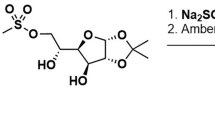Abstract.
Four genes encoding carboxysome shell peptides (csoS1A, csoS1B, csoS1C, csoS2), the genes encoding the large and small subunits of RuBisCO (cbbL, cbbS), and three unidentified ORFs constitute an operon in Thiobacillus neapolitanus. An unidentified ORF 1.54 kb in size is predicted from sequence analysis to encode a protein with a molecular mass of approximately 57 kDa. When this ORF was expressed in Escherichia coli under the control of its endogenous ribosome-binding site, no peptide product was observed. In order to correlate this ORF with a carboxysome peptide, the ORF was overexpressed in E. coli by cloning it into pProExHTb, a prokaryotic expression vector containing an E. coli ribosome binding site. When antibodies raised against the recombinant protein were used to probe an immunoblot containing carboxysome peptides, a 60-kDa peptide was recognized. The peptide was subsequently named CsoS3. CsoS3 is a minor component of the carboxysome; a peptide of this size is commonly not observed or is very faint on Coomassie blue-stained SDS-polyacrylamide gels of purified carboxysomes. Immunogold labeling established CsoS3 to be a component of the carboxysome shell.
Similar content being viewed by others
Author information
Authors and Affiliations
Additional information
Electronic Publication
Rights and permissions
About this article
Cite this article
Baker, S., Williams, D., Aldrich, H. et al. Identification and localization of the carboxysome peptide Csos3 and its corresponding gene in Thiobacillus neapolitanus. Arch Microbiol 173, 278–283 (2000). https://doi.org/10.1007/s002030000141
Received:
Revised:
Accepted:
Issue Date:
DOI: https://doi.org/10.1007/s002030000141




